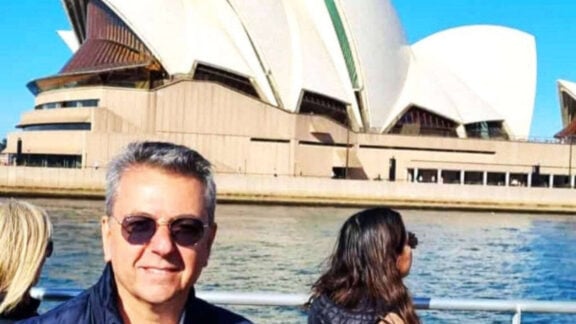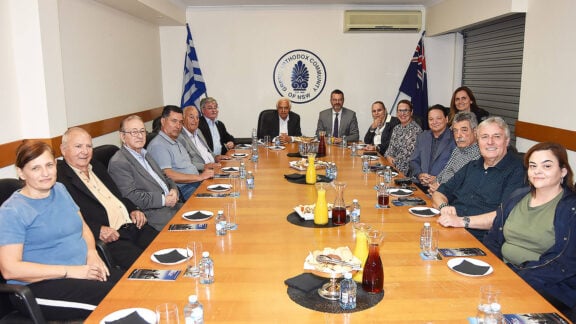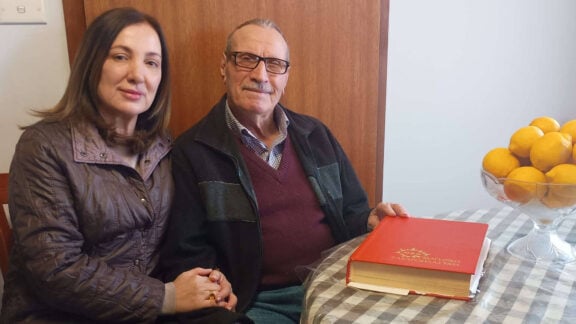One of the first things that I discovered about my late lamented father in law upon meeting him for the first time was that unbeknownst to us, we had crossed paths years before, attending the National Gallery of Victoria’s 1997 exhibition of Assyrian antiquities, on loan from the British Museum.
“I was there,” I effused, “protesting.”
“Why on earth would you do that?” my then prospective father in law, asked mystified.
The reason of course related to the fact that in removing the Assyrian antiquities from Mesopotamia, then under the Ottoman Empire, the British adopted almost wholesale, the tactics that had served Elgin so well in relation to the Parthenon Marbles. Vast blocks of monumental statuary were hewn out of temples and other ancient edifices, thousands of tablets displaying records in one of the world’s oldest forms of writing were removed from their native lands and taken to Britain by Elgin’s eastern counterpart, British ambassador to Constantinople, Austen Henry Layard. As far as I was concerned, both Elgin and Layard were agents of British orientalism, seeking to demean colonised cultures by appropriating their ancient past while presenting their modern descendants as unworthy beneficiaries of their glorious heritage.
“Nonsense,” my father in law retorted. “The British should be thanked. They saved us.”
Astounded, I allowed him to elaborate. His thesis was quite simple. By the mid nineteenth century when Layard arrived on the scene the ancient monuments of the Assyrians had been buried for centuries, if not millenia. The Assyrian people, subjected to millenia of persecution by the Persians, then by the Arabs, and then in turn by the Kurds and the Ottomans, had dwindled to a hardy but nonetheless numerically small race, dwelling in the mountains for safety. Apart from the Bible and the record of the Ancient Greek historians, all knowledge of the ancient Assyrians had been lost. Such Assyrian antiquities that were unearthed by the Muslim rulers of Mesopotamia were either considered the works of demons and destroyed owing to their religious prohibition against depicting the living form or repurposed as building material.
Thus, according to my father in law, the Assyrians owed the British a debt of gratitude. Not only did they save the Assyrian antiquities from destruction, by discovering them, writing about them and studying them, they resurrected an entire civilisation, one which whom contemporary Assyrians had lost all connection and now feel justifiably proud of. Indeed, based on his discoveries, Layard was one of the first westerners to recognise the contemporary Assyrians as descendants of their ancient ancestors. If there was anything at all blameworthy about the British, my father in law concluded, it was that the person who did most of the detective work, co-ordinated the digging and was ultimately responsible for most of the finds, was not Layard but rather his Assyrian assistant, Hormuzd Rassam, who although discovering the Ashurnasirpal temple in Nimrud, the cylinder of Ashurbanipal at Nineveh, two of the unique and historically important bronze strips from the Balawat Gates and a palace of Nebuchadnezzar II at Borsippa, received hardly any credit and is little remembered. Further my father in law continued, it was Rassam’s work in supplying Britain in antiquities that facilitated his mission of inquiry during the Russo-Turkish War of 1877–78 to report on the condition of the Assyrian, Armenian and Greek Christian communities of Anatolia and Armenia, on behalf the British. By contrast, the names of the many Greek antiquarians who made their living supplying the Western market with Greek antiquities during the Ottoman era, such as Greek doctor and alchemist Anastasios Yiannoullis who in 1690 promised to send the famous philosopher Gottfried Wilhelm Leibniz: “inscriptions and other ancient curiosities from the Kingdom of Morea,” are largely written out of the Greek national discourse, for obvious reasons.
Years later, as we watched footage of crazed ISIS terrorists smashing Assyrian antiquities in Iraq, my father in law shook his head sadly. “See,” he groaned. “This is what would have happened to the ones in the British Museum. Thank God that they remain there where we and the rest of the world can view them in safety.”
On the face of it, the historical trajectory of the Greek and Assyrian people is remarkably similar. Civilisation and Empire, followed by conquest, persecution and subjugation, facilitating cultural pillaging. What then accounts for the difference in attitude between the two peoples as to the manner in which the British appropriation of their antiquities took place? “Had Assyria achieved its independence, you would have a different perspective,” I countered my father in law. “If there was a free Assyria today, able to house its ancient artefacts safely, there would be no need for the British Museum. Instead, you would be railing at the enormity of the theft.”
“If….” my father in law repeated sadly.
There can be no doubt that if there is one issue that unites the Greek people, it is that of the righteousness of championing the Return of the Parthenon Marbles. And it is this cause that is, paradoxically enough, dividing sections of the Greek community in Australia today. In an article that was published in the Herald Sun on 4 January 2022, former MP and current President of the Cyprus Community of Melbourne Theo Theophanous, opined that the entire Australian community should boycott the recent National Museum of Australia’s exhibition of Greek antiquities entitled “Ancient Greeks: Athletes, Warriors and Heroes.” The basis behind his urging is that the artefacts forming the subject of the exhibition are on loan from the British Museum:
“This year represents the 200th anniversary of the taking of the marbles and many Australians of Greek heritage feel insulted that the British Museum is holding an exhibition in Australia of Ancient Greek artefacts while steadfastly refusing to give back the Parthenon Marbles.”
In advancing his argument further, Theo Theophanous alludes to an inherent power imbalance in the manner in which the exhibition is being staged:
“The National Museum of Australia, with support from the Morrison Government have funded the exhibition. They have provided concessional tickets to members of the Greek Community in Canberra in an attempt to buy their silence.”
In response on social media, president of the Greek Orthodox Community of Canberra, John Loukadellis, refutes the assertion that concessional tickets were provided to members of the Greek Community of Canberra as alleged, asserting: “the Ambassador of Greece in Australia also supported and attended [the opening]. Note that of the 170 items that are being exhibited, not one of them is or has been a matter for contention or request for return. Nor are any of the items for viewing stolen from Greece, but have been found around other parts of Europe and Turkey. The community sponsor for this event is the Hellenic Club of Canberra – so rather than boycott and be outraged, this is a once in a lifetime exhibition for us all to enjoy and raise awareness of the Marbles issue too…
Let’s be supportive and understand that there are no marbles on show at the exhibition and we should not boycott the National Museum of Australia for providing us with this exhibition. I am sure if you go and view and read about each of the items on show, you would be glad you went and viewed them, whilst understanding the issue around the Marbles has been addressed and awareness raised…”
Both arguments are cogent ones. On the one hand, one cannot but share Theo Theophanous’ contention that the British Museum and the British government’s stance on the Parthenon Marbles is contemptible and must be protested in the most strenuous terms. On the other, an exhibition of this nature affords members of the younger members of the Greek-Australian and the broader community the opportunity to encounter ancient Greece in a direct manner otherwise not attainable unless they travel overseas, a prospect in these COVIDIAN times, fraught with difficulty. Do we thus boycott an exhibition which showcases and makes Greek culture amendable to a broader Australian audience, or do we rather, utilise it as an opportunity to discuss the theft of the Parthenon Marbles within the mainstream?
Further, and this is the salient point that few have seemed to focus upon, should not this exhibition serve as the ideal starting point for an intelligent debate as to how our ancient past is portrayed and who is in control of its narrative. Whose ancient past are we actually referring to? Take the title of the exhibition for example. After the words “Ancient Greeks”, immediately comes the word “Athletes,” (not surprising for the sports-mad Australian zeitgeist and the Anglosphere in General), “Warriors” (like those who travel abroad to make the world safe for democracy?) and “Heroes” (like Achilles in the form of Brad Pitt?). Do Women, children, writers, philosophers, sculptors, painters, scientists or mathematicians need to apply? Whose story is this? That of the descendants of a colonial power that has, in its quest for aggrandisement and global domination, including the assumption of sovereignty of this land and the dispossession of its First Peoples, employed the ancient Greek heritage to suit its own ideology? If so, is not any form of collaboration with the dominator, including serving or engaging with the power structures that are its colonial legacy tantamount to validation not only of the theft of the Parthenon Marbles but of the whole colonial paradigm in general? Or, to adopt a less extreme perspective, can we use exhibitions ostensibly of “Ancient Greek” artefacts that reinforce cultural stereotypes or underline the national myths of the ruling class to assert those aspects of ancient Greece that we, its descendants feel, are effaced.
That of course depends on two things: the first, understanding how the exhibition is themed and what is its discourse. The second, which is more difficult, having considered the exhibition’s narrative, is to also consider to what extent our own comprehension and appreciation of our ancient heritage is dependant upon its mediation, interpretation and validation by the colonial powers that have shaped our people’s history, determined the extent of its freedom and autonomy and under whose authority its migrant communities exist.
To do all of these things, requires visiting the exhibition and ruminating over its messages, and the reader can be sure that the Diatribist will do so, clad in Pelasgian goat-haired foustanella and t-shirt bearing the legend: “Give us back our Marbles,” in Homeric Greek, with Oxford pronunciation, of course, and “Give us back our Assyrian slabs,” in Akkadian cuneiform for unlike my father in law, I consider the carting away and captivity of vanquished gods by the conqueror a barbarous Babylonian custom, one that we all would benefit from its discarding.









